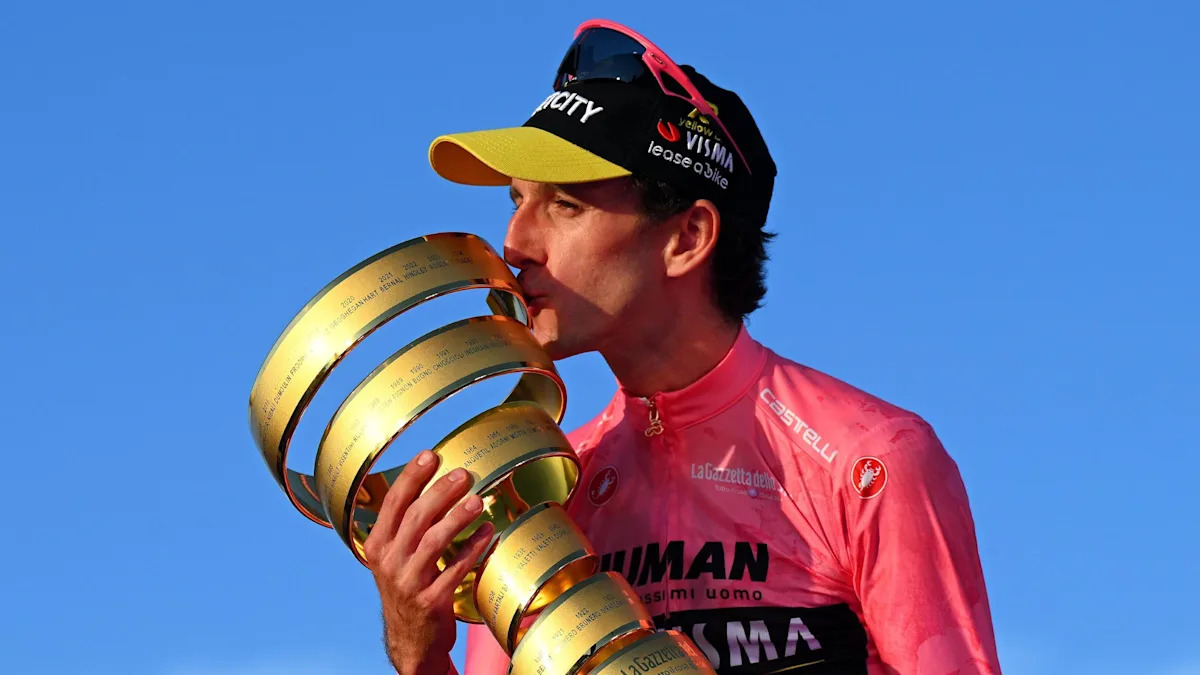Simon Yates has long held a special affection for the Giro d’Italia, but his journey has often veered toward the painful. In one of cycling’s most grueling stages, the British rider faced trials that would have made many question their faith in the sport. Since his debut in 2018, Yates has encountered heart-wrenching setbacks, casting a shadow over what should have been a triumphant tale. Yet, against all odds, he has finally conquered the Giro, transforming heartbreak into victory.
In his first attempt at the Giro in 2018, Yates was poised to claim his first Grand Tour title. After 13 days in the leader’s jersey, he found himself suffering a severe fall from grace, dropping from first to 18th overall. For the next four years, illnesses, injuries, and less-than-stellar form plagued his efforts, leading many to believe that his chance at Giro success had slipped away. His long-awaited return to this year’s edition was marked with cautious optimism, as he had transformed his previous experiences into a deeper determination.
Perhaps it was the absence of pressure that allowed him to soar this time. Yates quietly maneuvered through the stages, biding his time before launching an audacious attack on stage 20. As he seized the maglia rosa—the leader’s jersey for the first time since that fateful 2018 collapse—he sealed not just a victory but also a chapter of closure in his storied history with the Giro.
The emotion surged as tears streamed down Yates’ face upon crossing the finish line in Sestriere. In a candid moment, he expressed just how much the Giro meant to him, stating, “I’ve really invested a lot of my career and my life into targeting this race, and there’ve been a lot of setbacks.” Indeed, Yates’ setbacks have been monumental, from a disappointing eighth place in 2019 to a COVID-19 withdrawal in 2020, and various injuries and strategic misfortunes leading up to this year’s triumph.
In a significant poetic twist, it was on the Colle delle Finestre, the same climb that once saw him collapse like a house of cards in 2018, where Yates found his moment of triumph. He had privately harbored the desire to conquer this challenging ascent since the route was announced, planning to use it as an opportunity for redemption—not just for himself but for everyone who has faced loss and setback.
Yates’ strategy differed this year from past attempts. He opted for a new team and a fresh approach. After years with Orica-GreenEdge (now Jayco-AlUla), he made a strategic switch to Visma, a squad known for their experience and success in Grand Tours. The move proved pivotal, allowing him to harness the strength of a collective unit that has triumphed in multiple tour events. The contributions of powerhouse riders like Wout van Aert provided Yates with the leverage he needed in critical moments, especially during that decisive stage.
Unlike previous years where he often had to force plays for victory, Yates maintained a carefully controlled pace. Throughout the race, he remained steady, consistently climbing the ranks and avoiding the pitfalls that had once derailed him. He made it to the top ten and gradually moved to second on stage 14 before encountering yet another setback, slipping back to third on stage 17. Yet, instead of succumbing to frustration, Yates focused his energies on recalibrating his strategy.
On the penultimate day, with all odds stacked against him, he faced a moment filled with suspense and uncertainty. But unlike in past years, Yates had learned to channel his frustrations into a powerful comeback, compounded by his team’s flawless execution of a pre-planned strategy that allowed him to break free from the pack toward glory.
In Rome, as he crossed the finish line, the atmosphere was radiant with jubilation but also tinged with introspection. Yates understood the weight of his journey, reflecting on how it resonated with so many. “A lot of people can resonate with the story, losing the race a long time ago now, in 2018,” he noted, embodying a shared human experience of rising from defeats.
Looking ahead, Yates is set to ride in support of team-mate Jonas Vingegaard in this year’s Tour de France, although he remains optimistic about pursuing stage wins. Much like other storied athletes who have faced their demons, there’s a palpable sense of renewal surrounding Yates. His victory is not merely about reclaiming a title; it symbolizes the unbreakable spirit of persistence against adversity.
Rather than frame this win as redemption—a term so often bandied about in the world of sport—it’s more accurate to perceive it as a release. Yates didn’t owe anyone a comeback; his past performances had been marred by misfortune rather than failure. Instead, this victory serves as an affirmation, a conclusion of sorts to a tumultuous chapter that began years ago.
As Yates eloquently sums it up, “Life comes around; it gives and it takes.” His story is not just one of cycling but a narrative of resilience, culminating in relief, joy, and the promise of more challenges ahead. This year at the Giro was not just about reclaiming lost glory but about allowing the past to inform rather than dictate the present. With this hard-earned victory, Simon Yates stands as a symbol of hope and perseverance, reminding us all of the beauty that can emerge from struggle.
Source link



:max_bytes(150000):strip_icc():focal(749x0:751x2)/Randy-White-Lorrie-Morgan-050125-2-0f1695fa4dd1479aa66e3ab8ad550bb8.jpg?w=150&resize=150,150&ssl=1)






